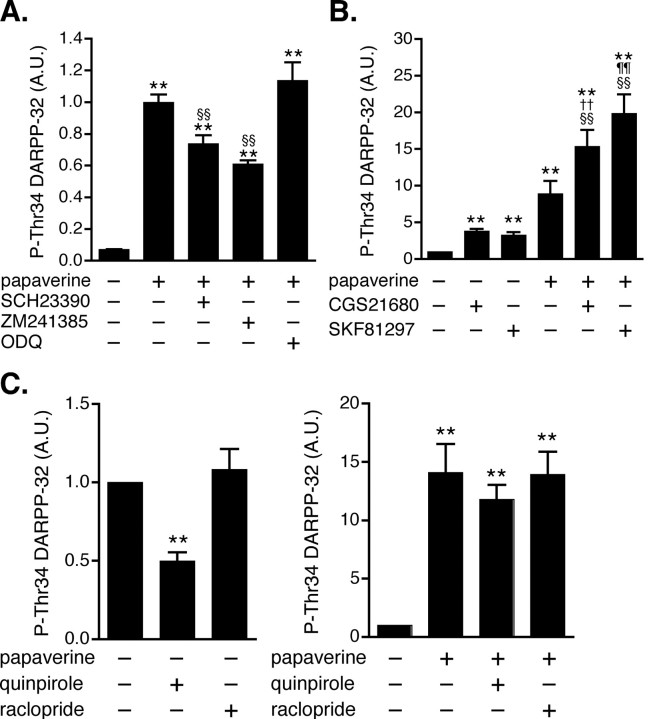Figure 3.
Effect of papaverine on dopamine D1, dopamine D2, and adenosine A2A receptor signaling in neostriatal slices. A, The effect of papaverine (10 μm for 60 min) on DARPP-32 Thr34 phosphorylation was examined in the presence of a dopamine D1 receptor antagonist, SCH23390 (1 μm for 60 min), an adenosine A2A receptor antagonist, ZM241385 (1 μm for 60 min), or an inhibitor of soluble guanylyl cyclase, ODQ (10 μm for 60 min). Data represent means ± SEM for 4–6 experiments. B, In slices pretreated with papaverine (10 μm for 60 min) and adenosine deaminase (30 μg/ml for 60 min), the effects of a dopamine D1 agonist, SKF81297 (1 μm for 5 min) and an adenosine A2A receptor agonist, CGS21680 (5 μm for 2 min), on DARPP-32 Thr34 phosphorylation were examined. Adenosine deaminase, additionally included in the incubation medium to decease tissue content of adenosine, reduced the basal and papaverine-induced levels of phospho-Thr34 DARPP-32. Data represent means ± SEM for 6–19 experiments. C, The effect of a dopamine D2 receptor agonist, quinpirole (1 μm for 10 min), and a dopamine D2 receptor antagonist, raclopride (1 μm for 10 min), on DARPP-32 Thr34 phosphorylation was examined in the absence (left) or presence (right) of papaverine (10 μm for 70 min). Data represent means ± SEM for 7–13 experiments. **p < 0.01 compared with control; §§ p < 0.01 compared with papaverine alone; †† p < 0.01 compared with CGS21680 alone; ¶¶ p < 0.01 compared with SKF81297 alone; one-way ANOVA followed by Newman–Keuls test.

